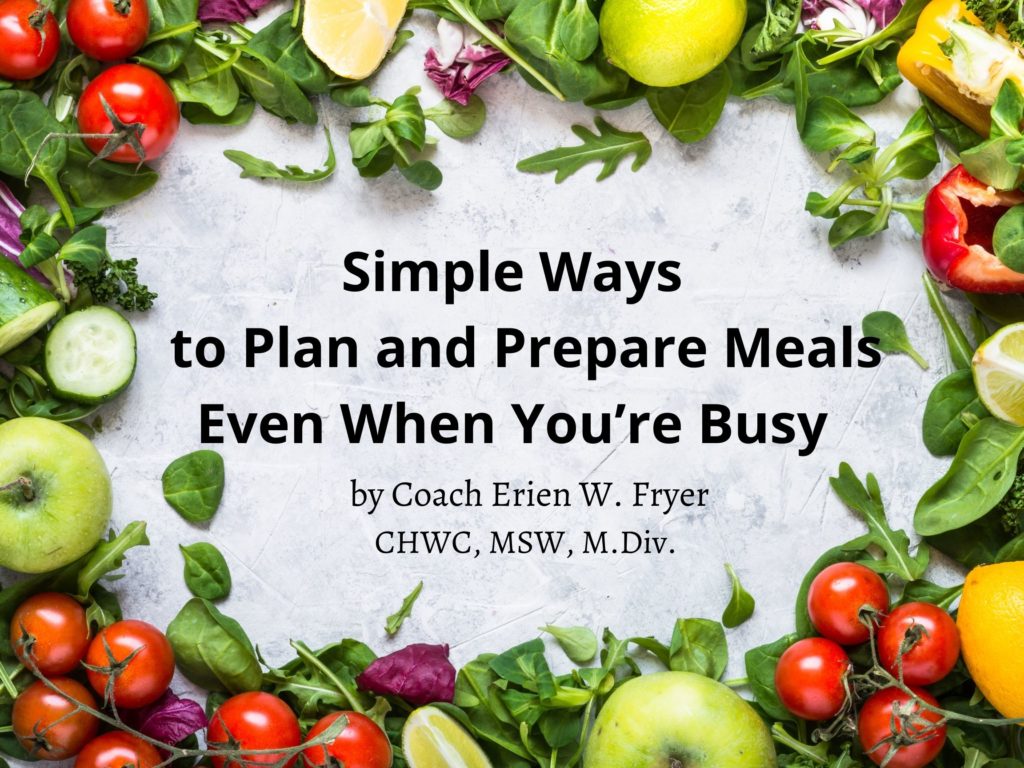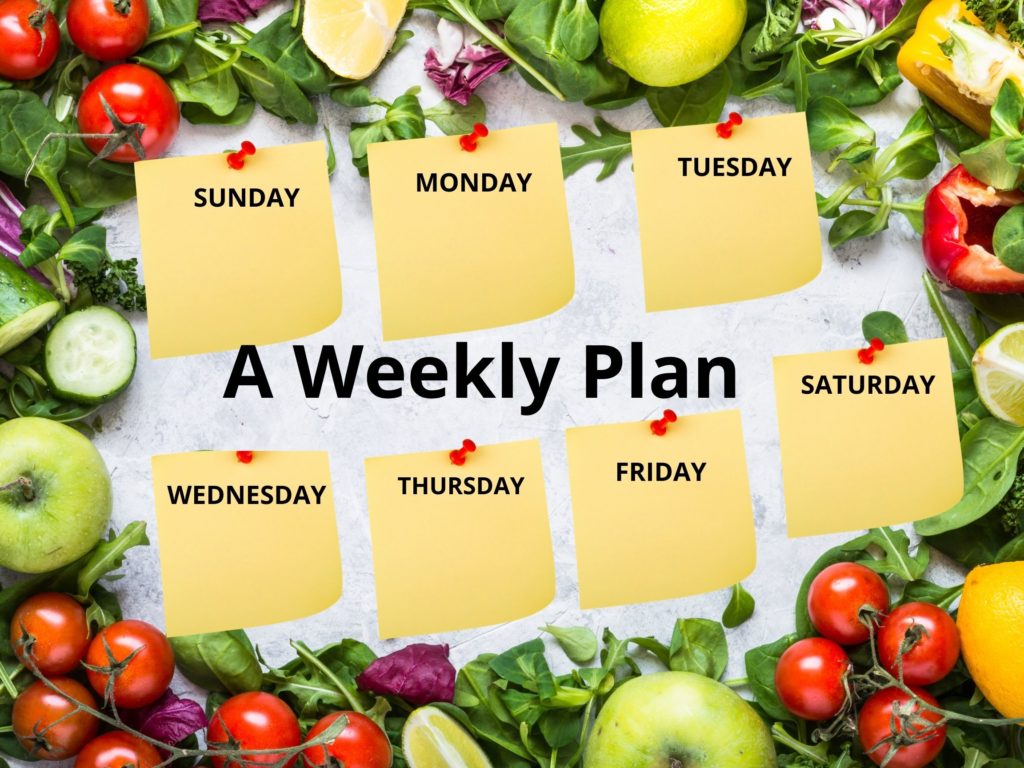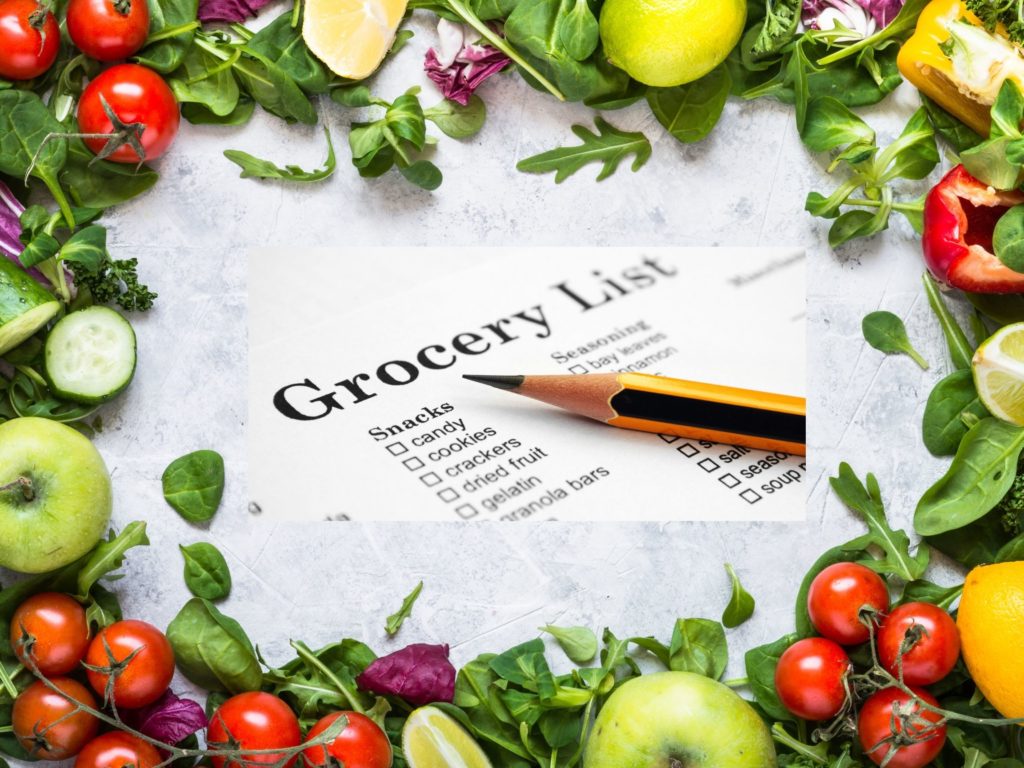
You want to eat healthier, but you are super-busy.
You eat out several times a week because that is what you must do. That is what works for you and your family (when it comes to time and convenience).
But you probably realize it is not working great when it comes to your health and fitness goals.
You want better health. You want to eat better. You do not want the extra calories, fast food, and junk food as much anymore. And you DO want to save time and money.
I get it!
So, as a health coach, I am here to help you.
I have a simple strategy that I am more than happy to share with you. It will help you to plan and prepare healthy meals for the week.
Now, you do not need to completely abandon your regular meals out. You can use my strategy to help you eat out just one or two fewer times per week. It’s up to you.
As with any lifestyle change, start gradually so you can build consistency. The key here is to make it easy, doable, and rewarding enough to do again and again.
Let me walk you through my simple meal-prep system, and how this can work for you.

PLAN MEALS FOR THE WEEK
I prefer to do this on the weekend. I’ll flip through my recipes and choose a bunch to make that week. I’ll even pick which days to have which meals if I’m feeling overly ambitious, but that’s not necessary if you’re new to this. I’ll bookmark the pages and write my chosen recipes down in a notebook or even a sheet of paper to put on my fridge. I like to have at least one crockpot meal each week because they’re so easy, and dinner is ready and waiting when you get home.
However, if the thought of “recipes” causes you to break out into a “cold sweat” let’s simplify this step even further into a few simple steps using our major food groups as a guide (this involves minimal “cooking” skills. Simply cook the meats and everything else could be consumed raw:
- 1. 2-3 Meat proteins (or protein of your choice if you prefer to omit or limit your meat consumption) (i.e., organic chicken, grass-fed beef, wild-caught fish, organic eggs may be a good option if they are acceptable to your body) (www.uswellnessmeats.com, www.kasiofseafood.com, as well as local suppliers for wild-caught seafood and grass-fed beef, free-range organic chicken and many other suppliers are available.
- 2. 6-8 Vegetables (that may sound like a lot but many of them can be consumed raw in a mixed salad filled with your favorite greens or in a smoothie)
- 3. 3-4 Types of organic fresh fruit (the quantity will depend upon your family size). These are excellent for on-the-go consumption or a substitute for a processed sugary sweet in between meals. However, be aware that it may be tempting to reach for a sugary “fruit cup” that is swimming in sugar. I know you know what to do (read the labels carefully and if in doubt shop the perimeter of the grocery store and purchase fresh fruit instead).
- 4. 1-2 Healthy fats for the week (Avocados, coconut, coconut manna, grass-fed butter, grass-fed ghee (if your body is not a fan of dairy products)
- 5. Nuts and Seeds may be used to mix with the fruits to add to the effectiveness of the metabolism process and prevent a possible “sugar rush” if you are sensitive to eating fruits alone.
- 6. Mix and Match- Simply place the proteins on each day of the week (breakfast, lunch, dinner) (by the way you may elect to cook all your meats for the week. Ok, I know I am getting ahead of myself a bit because I am so eager to share with you what works for me.) Do the same thing for your other major groups of foods so that you have adequate servings of each item type for each meal.

MAKE A GROCERY LIST
Then I create my grocery list. I take a quick look in my fridge, freezer, and pantry, and list the recipe ingredients that I need to buy.
Tip: If you are not sure you have enough of an ingredient already, consider buying a “backup” one just in case. I have had times where the ingredient that I planned to use was a bit short of what I needed. Having to run out in the middle of meal prep can be very frustrating.
Another thing to consider is doubling the recipe(s), so you can prep and cook once, but have twice the meal at the end. The extras can be taken for lunch, or frozen to pull out the night before a busy day, so you just need to heat it up when you are ready.
Tip: If you are doubling a recipe, don’t forget to double the amount you buy from the grocery store.
Once you have your handy-dandy grocery list ready, hop on over to the store and pick up your essentials. If you do not have enough food storage containers for your meals, now’s the time to pick up some of those too.
Tip: This may be an excellent time to investigate moving away from plastic lunch containers so as to kill two birds with one stone since you may be aware that the BPA in plastic can leach out into the food (even if the containers are “BPA free” they may contain another variant such as BPS that is of greater health concern). Most of these containers have plastic lids. Therefore, it will be helpful not to fill the containers full so that your food does not touch the plastic more than necessary. In addition, they can lighten your dishwashing duties since they are dishwasher safe. These glass dishes are reasonable and can be found locally or online at www.amazon.com. I purchased a set that is the perfect size for my lunch needs.
Tip: If you are not a fan of washing and chopping produce, then consider buying them already pre-washed and pre-chopped, or even frozen. You can make your meal prep even easier if you do not mind spending a couple of extra dollars.
Tip: If going to the grocery store is a challenge, with a prepared list it may be helpful to utilize the shopping services that are available at many grocery stores now. This way, if you need to call in your order and either pick it up on the way from work or have it delivered you may save enough time to prepare a dish or two.
Tip: I can hear someone saying, “What about my children? They eat all day. What do I do for them?” That is an excellent question. Much like many things on our health and wellness journey, there is not a one-sized fit all approach. However, as adults, we have the responsibility to ensure that healthy food choices are available. If we are introducing new foods there may be some temporary resistance, however, well-prepared vegetables are naturally sweet and readily consumed by children especially if there is not another choice. I was once told that hunger is the best appetizer. We can also lead by example. Instead of consuming chips while watching a movie with the family, we may elect to have raw or lightly steamed vegetables with sea salt or organic popcorn popped on the stove or in an air popper with a bit of grass-fed butter with some refreshing infused water. (Water that contains orange slices, strawberries, blueberries, etc.) Since children eat frequent small meals having food such as fruit, pieces of meat in consumable portions in small containers readily available, and regular meal times may help tame the “tiger in the tank” of our little ones.

PREPARE MEALS FOR THE WEEK
Since you’ve already chosen your recipes and have your groceries, let’s get started on prepping some of the ingredients.
I like to book off 2-3 hours one afternoon for this. Get your recipes ready, clear off your counter, and play some music (if you’re so inclined). This is an excellent opportunity to add mindfulness into the food preparation experience. This may be a great time to think about the impact of slowing down and properly preparing your food so that your body is well supported throughout the upcoming week. This time of preparation is also a time to celebrating YOU! You have traveled against the flow to obtain your groceries for the week and have a plan of getting them prepared over the weekend.
At this point, depending on time, I will either prep the ingredients, or pre-cook the entire recipe. Sometimes just washing and chopping produce and putting it in containers is a huge time-saver for weeknights. Or, you can go through and make a whole meal, and divide it up into portions and refrigerate or freeze. It is really up to you, because the more you do now, the less you’ll have to do when you’re hungry.
However, if the process of cooking for the week seems like a whale of a task, relax and break down the task into bite-sized pieces. For example, you may elect to cook one meat, make a super-sized salad (so that you can eat off of it for several days), and place it in an airtight container in the refrigerator. You will have several meals at once especially if you don’t mind eating leftovers.
By the way, in addition to making meal preparation a mindfulness exercise, this is an excellent time to teach our children the enjoyment of feeding our bodies healthy food. Assigning age-appropriate tasks can be enjoyable and provide a priceless time to bond with other family members.

ADDITIONAL MEAL PREP TIP
There is one meal that is easiest to plan and prepare in advance. It is one that’s also often the most difficult to eat at home if you’re busy.
That is breakfast.
Planning some overnight oatmeal is a great start to any day. Simply place ½ cup rolled oats, ½ cup your choice of milk, 1 tbsp chia, or flax seeds into a container (or make 5 for the whole week). Then place the lid on, shake them up, and put them in your fridge. In the morning you can quickly heat them up or even eat them cold (the oats will have absorbed the milk). Top with berries, chopped fruit, nuts, or seeds, and enjoy.
However, if you are like me and many others that I know with gluten sensitivities and grain challenges all is not lost. Breakfast is a wonderful time to get your vegetables in the form of soups (especially during the colder parts of the season and smoothies during the hotter times of the year). You may be wondering what this would look like. That is an excellent question, I have become very fond of squash soup over avocado with organic microgreens and nutritional yeast flakes with a few pecan halves on top. Since I am also sensitive to dairy and coconut, I had to modify my recipe as follows:
1. Acorn squash, 1. Spaghetti squash; 1 Butternut Squash. Cut each in half lengthwise and remove the seeds. Place face down on a cookie sheet covered with parchment paper (for easy clean up), then roast in the oven at 350 or higher if you are in a rush, I prefer low and slow because I am in the kitchen preparing other dishes at the same time. Roast until the contents scoop out of the shell easily. Instead of the creaminess of the dairy or coconut, I get the creamy texture from boiled rutabaga or turnip roots, or yucca. However, since I am sensitive to potatoes, I could not use yucca. In the pot that I am going to cook the soup in, I sauté some sweet onions, garlic, fresh ginger, fresh or dried turmeric in ghee. Then I add the squash that has been scooped out of the shell, the turnips or rutabaga in the soup pot with rosemary and some Pacific Organic Vegetable broth however if you desire organic chicken broth from Pacific works well also but the salt content is higher in the chicken broth that the vegetable broth. Simmer so the flavors mingle then cool, and blend adding seasoning to taste and place in mason jars and refrigerate. I heat it on the stove for breakfast and pour it over an avocado that I have diced and scooped out of the shell add sea salt and cayenne pepper to taste. I add microgreens, nutritional yeast flakes (that make an excellent cheese substitute), and a few pecan halves.

With a little planning, you will be able to eat healthier while you save money and calories.
This may take some getting used to, so if I can be of help, please reach out and let me know.
I also welcome your feedback on this article. Enjoy. If you liked this information,
Click HERE to Sign Up for our Free Wellness Tip and Newsletter.
